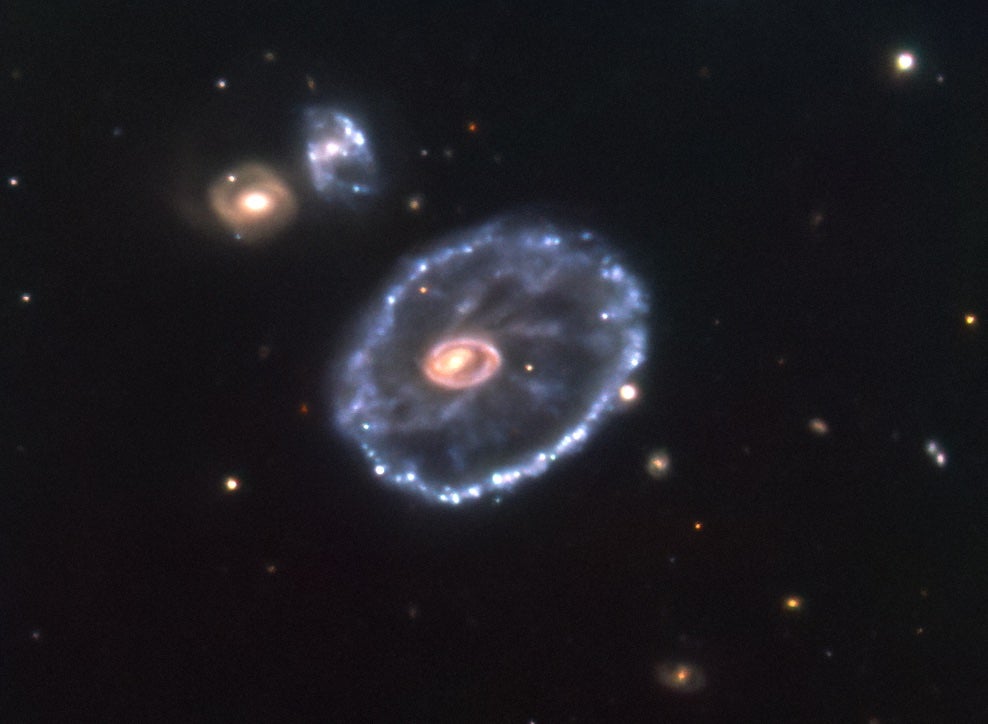
When astronomer Fritz Zwicky discovered ESO 350–40 (now called the Cartwheel Galaxy) in 1941, he considered it one of the most complicated known galaxy structures, based on its stellar dynamics. Little did he know how abundant peculiar galaxies were in the universe. Boris Vorontsov-Velyaminov in the late 1950s and Halton Arp in the early 1960s systematically scanned the Palomar Observatory Sky Survey to get a better handle on the number of galactic oddities throughout the cosmos. Unfortunately, the Cartwheel Galaxy’s –33° declination in Sculptor put it too low for their search.
Today, astronomers know significantly more about galactic collisions and how they affect structure and star formation. The symmetry of this system indicates a smaller companion passed through the center of a larger spiral galaxy. The gravitational effect is similar to a shock wave shaped like a ring. As the shock moved out through the spiral arms, it swept up and compressed dust and gas, disrupting the original spiral structure and creating many new stars. (Hence, the Cartwheel is considered a starburst galaxy.) The angular momentum of the larger galaxy’s disk was not eliminated, so a new spiral form is returning. In addition to the outer ring, the nuclear region also has a torus of young stars and a dust cloud, giving this object a double ring.
There are three companion spiral galaxies, two close by and a third that is more distant. The distant companion has a trail of neutral hydrogen connecting it to the Cartwheel, and is thought to be the hit-and-run instigator.
This system lies a half-billion light-years away. It has a low surface brightness, making it a difficult magnitude 15.2 object. It lies roughly 5° degrees east of the Sculptor Dwarf, a member of the Local Group.









